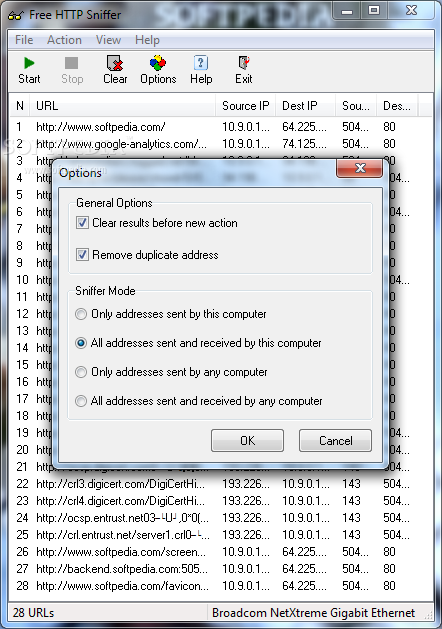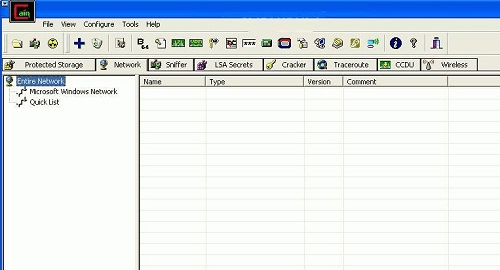

Building an ‘Include’ filterĪll of these filters are (mostly) readable text like this: udp port 53 This discards probably more than 95% of the packets that show up on the network, letting dnstop focus on just the ones that have dns requests and replies. From that point on the kernel will listen for incoming packets, but only hands up packets that are UDP and have 53 as their source or destination port. When it first starts and sets up sniffing, it tells the kernel to use that filter. By default, it uses ‘ udp port 53‘ as its filter. When we start up the sniffer we provide a block of text with this description, and the libpcap/winpcap/Npcap library only provides those packets to the sniffer.įor example, the dnstop program only wants to see DNS traffic going to or coming from UDP port 53. BPFīPF, the Berkeley Packet Filter, is a way of describing the packets the program wishes to see. For this reason, one of the most effective ways to handle heavy loads is to simply stop sending all packets to the capture program - just send the ones the program wants to inspect. The performance limitation is almost always in the program accepting these packets.
Winpcap http sniffer series#
The first thing to note is that the Linux kernel (we’re assuming you’re using Linux we’ll talk more about this in the third blog in this series ‘Choice of operating system’ section) is totally capable of keeping up with massive data streams (both lots of total bytes and lots of individual packets). While there certainly can be performance problems with reading packets from a pcap file (file containing packets previously captured from a network interface), when that happens it just takes longer for the analysis to finish, as opposed to losing incoming data entirely. In this discussion we’ll be talking just about capturing packets live. Inputįirst, we’ll look at the data coming in from the network interfaces. Had I not had that filter in place, tcpdump would have had to process more than 11 times as many packets, and would almost certainly not have been able to keep up with the flow. In this example, 0.12% of the interesting packets were lost because tcpdump was running too slow. Just over 10 thousand were dropped - the kernel received them and put them where tcpdump could see them, but tcpdump couldn’t retrieve them in time and so they were never processed. Of those, around 8 million were considered interesting (the other ~85 million packets were not even handed to tcpdump for processing see the ‘Filtering’ section below for how this is done).

In this run, almost 93 million packets arrived on the network interface. Tcpdump reports these statistics at shutdown here’s the output when I pressed ctrl-c in a window running it: 8392934 packets captured If your tool reports this at shutdown, look to see if this loss is under 3% - probably acceptable - or over 5% - time to look for performance fixes. If your capture tool is regularly unable to keep up, the loss might be anywhere from 5% to 90+% of the total packets received. When a packet capture tool is shut down it can poll libpcap for a number of statistics like ‘total number of packets received’ and ‘how many packets had to be discarded’ this way. When that happens and a new packet arrives, the oldest packet in that space is discarded and the library remembers this by incrementing a counter for each dropped packet. If the operating system is supplying packets faster than the capture tool is reading them, that space will fill up. Once the packet is retrieved by the packet capture tool, the space used by the packet is freed for use by another incoming packet. The operating system library used to make packet capture possible (libpcap on Linux and Mac, winpcap/Npcap on Windows) uses a shared data area to which it writes the packets (and from which the packet capture program reads them). This is the first post in a three-part series - the other two will cover processing and output.
Winpcap http sniffer how to#
To illustrate them, we’ll show how to actually use these techniques with three common packet capture tools Tcpdump, Zeek, and Wireshark. We want to share some of the most common techniques that help packet capture programs keep up with the load. The three tasks of reading packets from network interfaces, doing any needed processing, and sending results to disk/screen may seem like tame things to do, but they’re asked to do this to millions of packets per second. Uninstall winpcap.Packet capture tools regularly have problems with performance.


 0 kommentar(er)
0 kommentar(er)
